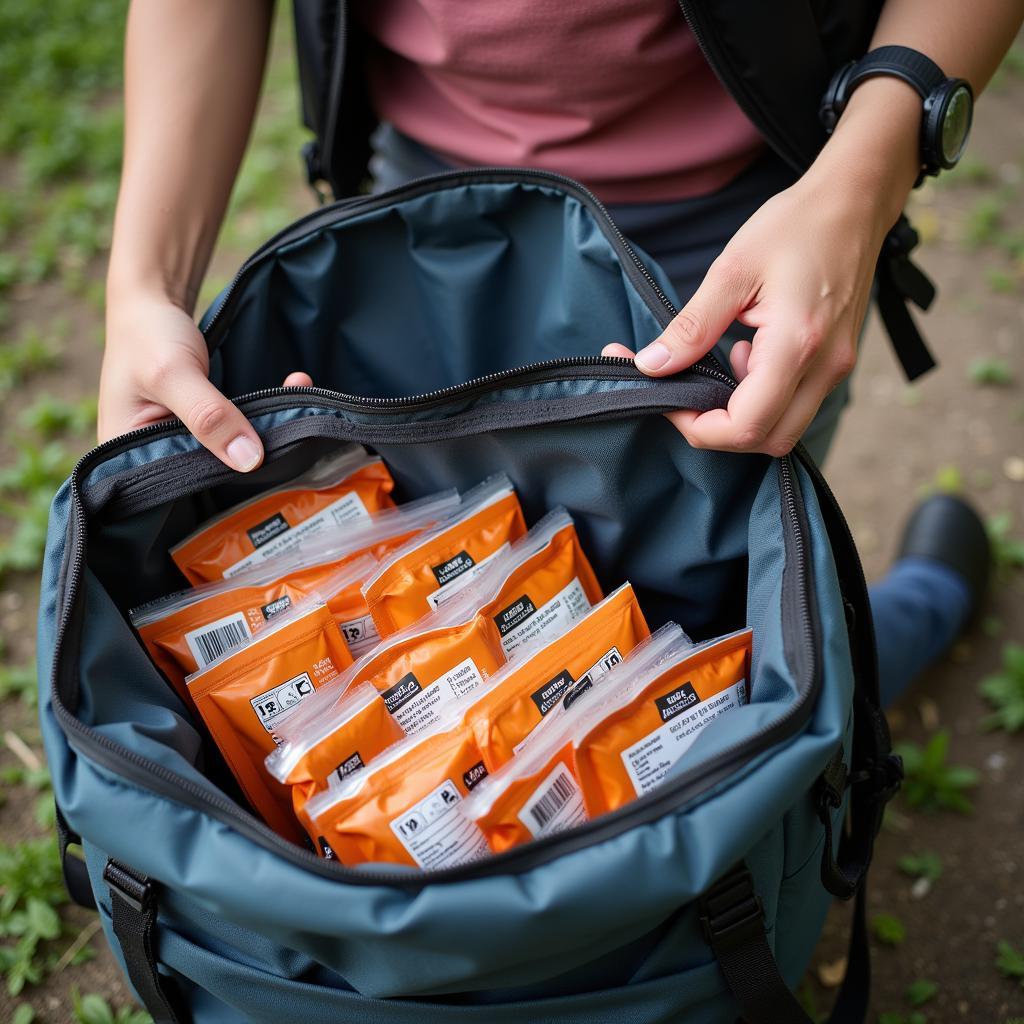Packing for a thru-hike can feel like a puzzle, and figuring out your Thru Hiking Food can be the most challenging piece. After all, you need lightweight meals that provide enough calories and nutrients to fuel your adventures for days, even weeks, on end. Don’t worry, I’m here to be your guide. From planning your meals to packing tips and recipe ideas, this comprehensive guide has everything you need to know about thru hiking food.
Why Thru Hiking Food is Different
Unlike a quick weekend trip, thru-hiking requires a different approach to food. You’ll be carrying all your supplies on your back, meaning weight is a major factor. Plus, you need food that’s calorie-dense and nutrient-rich to keep you going over long distances and challenging terrain.
Planning Your Thru Hiking Menu
A well-planned menu is the key to a successful thru-hike. Here’s what you need to consider:
1. Calories & Nutrition
Calculate Your Daily Calorie Needs: This varies depending on your weight, age, gender, and activity level. A good starting point is to aim for 2,500-4,500 calories per day.
Prioritize Macronutrients: Focus on a balance of carbohydrates, protein, and fats.
- Carbohydrates: Your primary energy source. Opt for complex carbs like oatmeal, quinoa, and whole-wheat tortillas.
- Protein: Essential for muscle repair and recovery. Include protein sources like jerky, tuna pouches, powdered peanut butter, and nuts.
- Fats: Provide long-lasting energy and help with nutrient absorption. Healthy fats can be found in avocados, olive oil, and nuts.
2. Meal Planning Strategies
Embrace Simplicity: Choose meals that are easy to prepare and require minimal cooking.
Pre-package Your Food: Organize your food into daily or meal-sized bags for easy packing and portion control.
Plan for Resupply Points: Factor in the locations and distances between resupply points along your trail to determine how much food to carry at a time.
Consider Taste & Variety: While lightweight and calorie-dense are important, don’t forget about flavor! Include a variety of foods to prevent taste fatigue.
Choosing the Best Thru Hiking Food
Lightweight & Non-Perishable Options:
- Dehydrated Meals: Lightweight, compact, and require only boiling water.
- Instant Oatmeal: A quick and easy breakfast option packed with carbohydrates.
- Trail Mix: A customizable blend of nuts, seeds, dried fruit, and chocolate for energy and nutrients.
- Powdered Milk & Beverages: Add to water for a calorie and protein boost.
- Energy Bars: Convenient for on-the-go snacking.
Fresh Food Considerations:
While fresh food can add variety and nutrition, it’s important to consider its shelf life and weight. If you choose to include fresh food, focus on:
- Durable Fruits: Apples, oranges, and bananas.
- Hard Vegetables: Carrots, celery, and bell peppers.
- Hard Cheeses: Cheddar, parmesan, and romano.
Tips for Packing Your Thru Hiking Food
- Use Compression Sacks: Compress your food bags to maximize space in your backpack.
- Repackage Food: Transfer food from bulky packaging into resealable bags to save weight and space.
- Pack Strategically: Place heavier items closer to your back and distribute weight evenly.
- Label Everything Clearly: Use a permanent marker to label all your food bags with the contents and date.
 Packing food for a thru-hike
Packing food for a thru-hike
Staying Safe with Thru Hiking Food
- Practice Food Safety: Wash your hands frequently and use hand sanitizer when water isn’t available.
- Store Food Properly: Keep your food in airtight containers and store it properly at camp to avoid attracting animals.
- Be Bear Aware: Follow proper food storage guidelines in bear country and consider using a bear canister.
Thru Hiking Food: FAQs
How much weight should I carry in my backpack for food?
This varies depending on your trip length and resupply points, but on average, hikers carry 1.5-2 pounds of food per day.
Can I bring a camp stove and cook my own meals?
Yes, many thru-hikers prefer to cook their meals. Lightweight backpacking stoves and fuel canisters are available at most outdoor stores.
What should I do if my food runs out before my next resupply point?
It’s crucial to pack extra food for emergencies. You can also ration your remaining food or try to contact the nearest ranger station for assistance.
Explore More Thru Hiking Resources
- Discover delicious and easy thru-hiking recipes on our blog.
- Get inspired by other thru-hikers and share your adventures on our community forum.
Need help planning your thru hiking food? Contact us at 02437655121, email us at minacones@gmail.com, or visit us at 3PGH+8R9, ĐT70A, thôn Trung, Bắc Từ Liêm, Hà Nội, Việt Nam. Our 24/7 customer service team is here to help you every step of the way!